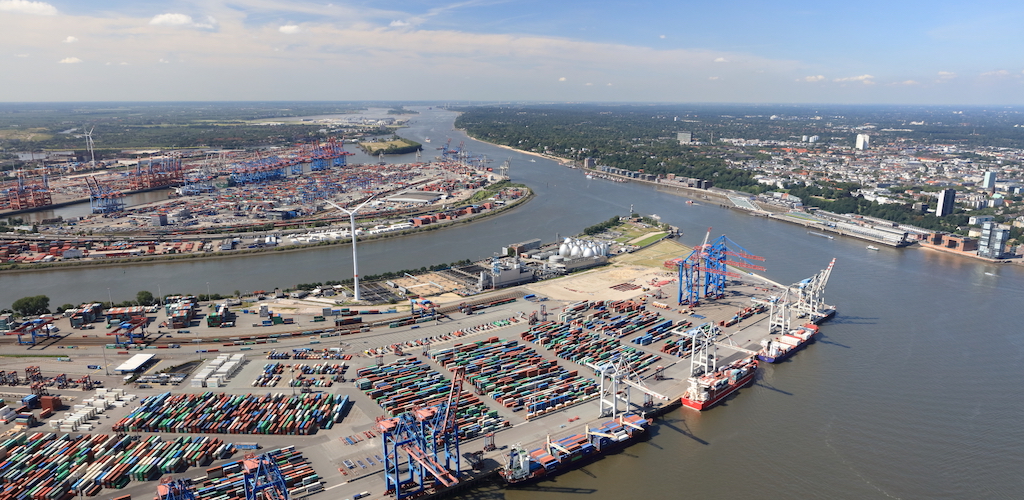Feb 25 | 2021
(Europe) Port Sees Positive Trend in Volumes

Authorities at the Port of Hamburg report that seaborne cargo throughput performed ‘better than expected’ in the fourth quarter of 2020, continuing a positive trend from the previous quarter.
Throughput in the fourth quarter was about 3 percent higher than in the same period the previous year, but the port authority noted that total throughput for the year was down.
“The first six months were notable for reduced activity in many areas of the economy, weaker consumer demand, and a reduction in liner service sailings. In Hamburg, this caused a double-digit downturn in throughput. We are delighted that the second half brought a turnaround, with the total throughput in 2020 showing only a single-digit minus,” said Axel Mattern, Joint CEO of Port of Hamburg Marketing.
The port posted a total throughput of 126.3 million tons for the full year 2020, a decline of 7.6 percent compared with the 136.6 million tons achieved in 2019.
Investment in Capacity
The turnaround in activity in the port is forecast to continue into 2021, as planned investments in infrastructure and handling facilities expand capacity and drive a resurgence in volumes.
“In 2021 we will also be completing the fairway adjustment of the Lower and Outer Elbe. This is an important and necessary signal for the port’s international customers and an indispensable prerequisite to be able continue playing in the league of the major European ports. The Port of Hamburg is one of the most important economic factors for all of Northern Germany, and as a hub for international trade it plays a highly important role in the entire German economic system,” said Michael Westhagemann, Hamburg’s Senator for Economics and Innovation.
Further proposed measures to improve operations for breakbulk carriers include the suspension of transit dues for the Kiel Canal and the expansion of shore-side power supply.
“As we see it, the liquidity effect of changes in import turnover tax is also among the positive wider measures. This arises from the deferment of the payment date for Import VAT and makes channeling imports via German ports more attractive. That is an important step in the right direction,” Mattern added.
Terminal operators HHLA and EUROGATE both also plan investment in their facilities and seaport-hinterland transport by rail is forecast to continue its growth trend.
Seaport-hinterland Traffic
Rail accounted for a volume of 46.6 million tons and 2.6 million TEUs, remaining fairly stable and even increasing its share of the modal split in seaport-hinterland traffic by 1.3 percent to 50.7 percent.
“In terms of volume, 2020 was the third-best year, and in terms of the number of containers carried it was the second-best year in the history of the Hamburg Port Railway,” Mattern said.
The port of Hamburg is Germany’s largest universal port and Europe’s leading rail port. It is part of the country’s largest continuous industrial area and is a regular exhibitor at Breakbulk events.
Subscribe to BreakbulkONE and receive more industry stories and updates around impact of COVID-19.


